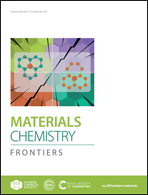Biodegradable ZnxNi1−xS hollow nanospheres for NIR-driven photothermal antibacterial therapy†
Abstract
Bacterial infections are a serious threat to public health due to their high morbidity and mortality, and there is an urgent need to develop therapeutic strategies that can effectively fight pathogenic organisms. Herein, ZnxNi1−xS (ZNS) hollow nanostructures were developed via a hard-template-engaged polyol method and coated with mPEG-PMHC18 to obtain ZNS@mPEG-PMHC18 (ZNSP) nanostructures with good biocompatibility. The as-prepared ZNSP nanostructures could effectively release Zn2+ and Ni2+ to interact with functional groups on the bacterial cell membrane to kill both conventional Gram-negative Escherichia coli (E. coli) and Gram-positive methicillin-resistant Staphylococcus aureus (MRSA). The heat generated by photothermal therapy (PTT) can inactivate phospholipids and cause bacterial damage, thus inhibiting the growth of microorganisms. More importantly, the ZNSP hollow nanostructures exhibit good biodegradability, and can be quickly removed from tissue without leading to side effects and toxicity during the metabolic process. Therefore, it is of great importance to develop biodegradable ZNSP hollow nanostructures as a kind of multifunctional antibacterial agent for potential application in antibacterial therapies.



 Please wait while we load your content...
Please wait while we load your content...